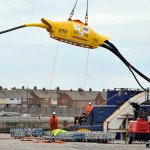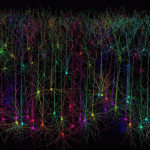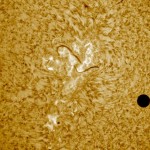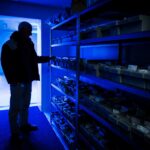
Organic Lake, Antarctica, is home to the new cannibal virus. Image: Professor Rick Cavicchioli
A virus-killer has been found in a hypersaline lake near Davis Station.
Viruses reproduce by infecting host cells and using them to copy their genomes. Virophages target host cells already infected by a regular virus and hijack the replication process by inserting their own genomes into the other viruses. They then replicate at the expense of the first virus.
The new virophage has been named Organic Lake Virophage (OLV) after the lake in which it was discovered by a team of scientists. The team, led by Professor Rick Cavicchioli from the University of New South Wales, travelled to Antarctica in 2006 and 2008 with the Australian Antarctic Division to take samples from the hypersaline lakes in Antarctica’s Vestfold Hills.
The samples were filtered to isolate the different microbial contents, such as algae, bacteria and viruses. Back in the laboratory, the team identified an unknown DNA sequence and were eventually able to reconstruct a circular genome similar to the virophage Sputnik.
OLV is only the third virophage to have been discovered- “˜Sputnik’ was discovered in 2008 and “˜Mavirus’ earlier this year. These virophages are also associated with giant viruses- Sputnik attacks “˜mamavirus’, which has the world’s largest viral genome, while Mavirus targets the CroV virus, which infects the plankton species Cafeteria roenbergensis.
OLV attacks a group of giant “˜phycodnaviruses’ (PVs), which infect algae, helping to control algal blooms. The presence of OLV and its predation of the PVs would mean a decrease in the time needed for the algae to recover, causing a significant impact on the ecosystems of the lake.
The Antarctic lake systems have evolved mechanisms to cope with long light-dark cycles and a limited food web. Professor Cavicchioli said “The prediction is that by affecting the way in which the virus interactions occur, it will lead to a higher number of the algae prevailing.”
This in turn will affect the frequency of the algal boom and bust cycles and the amount of nutrients being produced. “Other microorganisms can then utilise these nutrients and grow.”
There may be more cannibal viruses waiting to be discovered. The team also found strong virophage signatures in the nearby Ace Lake, but with “different variations on the theme.”
OLV-type sequences have also been found in a saline lagoon in the Galapagos, an estuary in New Jersey and a freshwater lake in Panama. “(This) highlights the potential for there to be a lot more out there that we don’t know about.”






